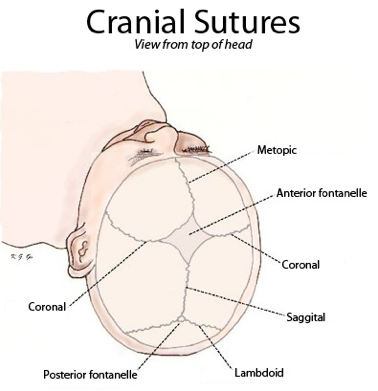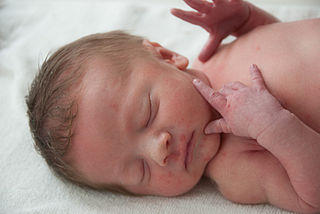9 Signs of Meningitis in Children (A Parent’s Guide)
Meningitis is a cause for concern for any parent. It is an infection of the linings around the brain and spinal cord that can result in death. Some types of meningitis are more deadly than others but even if the condition is not life threatening, it is a serious infection with major possible complications. The key is to identify meningitis as early as possible in children – a task that can be difficult as symptoms may not be as typical as it would be in adults. Parents therefore need to be vigilant when a meningitis outbreak is reported among children in a certain area. Even without outbreaks, being able to spot meningitis early can sometimes make the difference between life and death.
Facts About Childhood Meningitis
Meningitis in children is not a new health problem although widespread media attention in the digital age has made more parents aware about the condition. There are two major types of meningitis – viral meningitis caused by viruses and bacterial meningitis caused by bacteria. Fungal meningitis is also possible but quite uncommon.
Viral meningitis is the most contagious. Outbreaks are not uncommon, particularly in late summer and early fall, in the United States. It is usually mild but still requires supportive treatment. Bacterial meningitis is usually more serious. It occurs when bacteria enter the body and travel through the bloodstream to the brain and spinal cord. Sometimes it can directly spread from a neighboring area.
Prior to the introduction of the Hib vaccination, most cases of bacterial meningitis were caused by the Haemophilus influenzae bacteria. It is still a major problem in developing nations where immunization programs are not as widespread. However, this does not mean that bacterial meningitis is not a threat today. A bacterial infection in the ear or sinus can spread to the brain and lead to bacterial meningitis in children. Therefore parents need to ensure that these types of infections are treated promptly and effectively to prevent deadly outcomes like bacterial meningitis.
Headache
When a child complains of a headache, parents should always take it seriously. It may not always be meningitis but it is nevertheless significant. Unlike adults who experience headaches on a frequent basis and where it is often not serious, children are less likely to complain about headaches but rather about non-specific abdominal pain. In meningitis, the headache is usually severe and unbearable. Babies cannot complain of the head pain but parents should take notice of bulging on the soft spot of the baby’s head.
Stiff Neck
Neck stiffness is another characteristic sign of meningitis. Children may complain of tightness and pain in the neck. However, the headache can be so severe and distracting that the neck symptoms may be overlooked. Parents need to keep an eye out for neck stiffness in children. The child may be unable to turn their neck as they normally would or touch their chin to their chest with ease. This reduced range of motion may lead to the child changing their body movements in order to compensate.
Sensitivity to Light
Light sensitivity (photophobia) is another sign of meningitis. However, it is not specific to meningitis and may occur with many other conditions. Mild light sensitivity is not uncommon with most illnesses. When a person is feeling unwell, they tend to be intolerant to bright light or sunlight. However, photophobia is much more defined in that the child will want to be in a dark room and cannot bear to have the shades opened. Sunlight is quite intolerable and the child may not even want to rest outdoors or in a room with many windows during the day.
Sudden Fever
Fevers in children are not uncommon. Sometimes it is transient and there is no clearly identifiable reason for why a fever occurs for a short period only to resolve in its own thereafter. But a fever should always be taken seriously. In meningitis the fever is usually of a sudden onset and it is significantly high. On its own it may not be characteristic of meningitis but when considered along with other more typical symptoms, parents should be concerned about the possibility of meningitis and rush to the ER.
Vomiting or Nausea
Another sign of meningitis is vomiting. As with a fever, it is not an uncommon sign in children and vomiting on its own does not usually raise the concern about meningitis. Children are prone to gastroenteritis and vomiting is common symptom. However, when vomiting is seen with other symptoms like a headache, neck stiffness and light sensitivity then meningitis should be at the top of the list of possible causes. Sometimes there is no vomiting. Nausea may be present along with a headache, and can be one of the first signs of meningitis.
Confusion and Disorientation
The mental signs of meningitis can vary from difficulty concentrating to outright confusion. Children may not have the same attention span as they normally would on one end. At the other end with more severe mental symptoms, the child is unable to comprehend otherwise simple instructions, may seem disorientated and in extreme cases the child may be confused about the identity of others. Confusion is always a concerning sign and should warrant immediate medical attention even if other signs of meningitis are not present.
Crying and Apathy
Sleepiness and disinterest in daily activities are some of the other features of meningitis. A child may be inactive, wishing to be left alone and parents find that it is difficult to wake the child. Even activities that the child finds enjoyable is less interesting and the child would rather sleep than play. The symptoms may vary slightly in babies. Parents may find that the baby cries excessively and is often inconsolable despite being fed and well rested with clean diapers. When awake, the baby is also sluggish in movement and comparatively inactive.
Loss of Appetite
Changes in appetite are not uncommon in many childhood illnesses. With meningitis, there is a significant loss of appetite. The child may be disinterested in eating and even the sight of their favorite foods is not appealing. The nausea and vomiting compounds the problem and children may not even be interested in drinking fluids – not even sodas. Babies may feed significantly less than they normally would. The poor feeding habit of babies and children can reach extremes where food and drink is refused completely.
Seizures
Seizures (‘fits’) is one of the worrying signs of meningitis. Children should be taken immediately to the ER. Parents should not just pass it off solely as febrile seizures that are usually not serious in young children. Seizures in meningitis may also be due to compression on the brain. Not every child with meningitis will experience seizures and this does not mean that the meningitis is any less serious. Furthermore the seizures may not occur when the fever is at the highest.
References:
www.mayoclinic.com/health/meningitis/DS00118/DSECTION=symptoms







